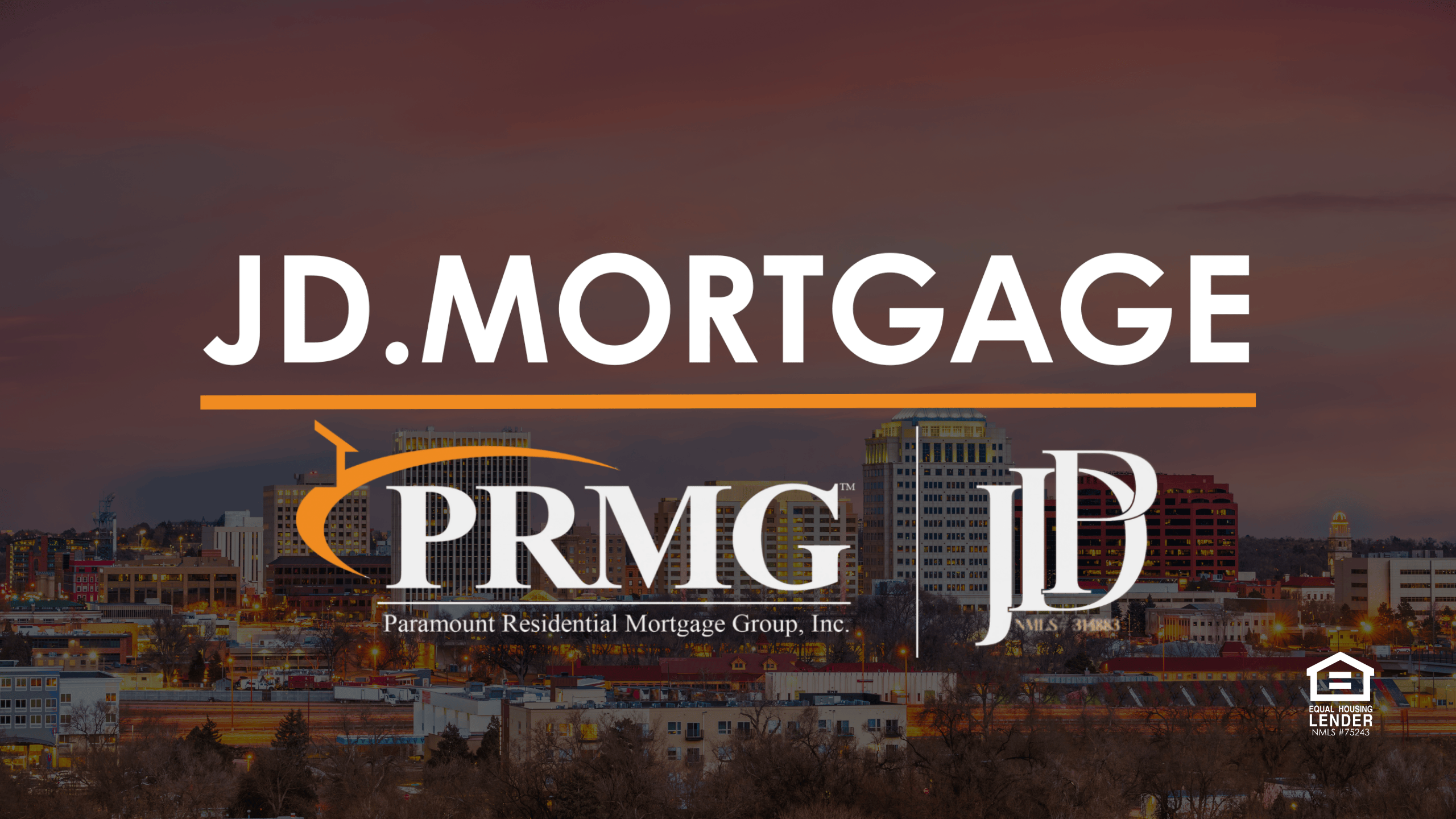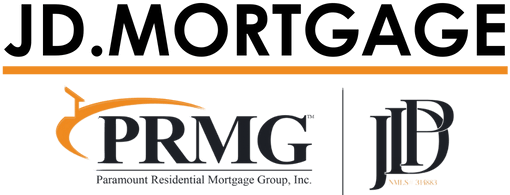
Home Purchase Loans
Home Purchase Loans are the financing tools that turn a signed purchase contract into keys in hand—aligning your budget, credit profile, and timeline with the right mortgage structure so your offer stands out and your closing is smooth. The JD.Mortgage team at PRMG operates as a hybrid lender and broker, giving you a wide product menu and the ability to match you with competitive terms without pushing a one‑size‑fits‑all path.
Why Choose the JD.Mortgage Team for Home Purchase Loans?
Because purchase financing is not just a rate—it’s structure, speed, and strategy. As a hybrid platform, we can deliver direct‑lender certainty and broker‑level optionality, which matters when you’re negotiating, removing contingencies, and lining up a fast appraisal and final approval. Our process is built for clarity with Tuesday/Friday status updates, transparent costs, and a human review to anticipate conditions before they become delays. Connect with the team
Pre‑Qualification vs. Pre‑Approval vs. Fully Underwritten Approval
Pre‑qualification is a quick estimate based on self‑reported info; sellers rarely rely on it. Pre‑approval validates your credit, income, and assets from documents. A fully underwritten approval (true credit approval) is reviewed by an underwriter before you’re in contract and carries the most weight for competitive offers. We’ll help you calibrate your approval level to the market you’re shopping in to strengthen your negotiating position. Back to top
How Home Purchase Loans Are Structured
Every loan has three pillars: qualification (credit, income, assets), collateral (the property), and terms (rate, payment type, and closing costs). We’ll map scenarios by monthly payment, cash to close, and break‑even timelines for points/credits, so you can weigh certainty vs. flexibility. If you’re comparing lender quotes, we’ll standardize them line‑by‑line to expose true differences. Back to top
Which Home Purchase Loans Fit Different Buyer Profiles?
Conventional suits strong credit and standard properties with as little as 3–5% down; FHA is more forgiving on credit and allows 3.5% down; VA can offer $0 down with no monthly PMI for eligible service members and veterans; USDA targets eligible rural areas with $0 down; Jumbo serves higher price points; and Non‑QM covers outside‑the‑box income (DSCR, bank statements, asset depletion, ITIN). We’ll map these side‑by‑side so you can pick the best fit. See loan options
Down Payment & Closing Costs—Realistic Planning
Your down payment is only one slice of cash to close. You’ll also plan for escrow deposits, lender and third‑party fees, prepaid interest, and initial taxes/insurance. We structure seller credits and lender credits strategically to reduce cash needed—or to buy down the rate when cash is ample. We’ll also review gift rules and down payment assistance (DPA) to keep offers competitive without straining reserves. Back to top
Understanding Mortgage Insurance (PMI, MIP) & VA Funding Fee
Conventional loans may require private mortgage insurance (PMI) when putting less than 20% down, and it can often be removed when equity grows. FHA uses an upfront and annual mortgage insurance premium (MIP). VA has a funding fee that can be financed, with certain exemptions for disability ratings. We’ll compare lifetime cost, cancellation options, and equity ramp to pick the most efficient route. Back to top
Rates, Points, Credits, and Temporary Buydowns
Rates move with markets; points buy the rate down; credits trade a slightly higher rate for help with costs. Temporary buydowns (like 2‑1 or 1‑0) can trim the payment for the first years and are useful when seller credits are available. We’ll show total cost over time with and without buydowns so you can decide whether to deploy credits at closing or toward permanent rate reductions. Run a calculator
Income Types & Documentation
W‑2 buyers document stable earnings with pay stubs and W‑2s. Self‑employed buyers typically provide personal/business tax returns and year‑to‑date P&L; however, Non‑QM alternatives like bank statement loans or asset depletion can help when traditional tax returns understate true cash flow. We’ll outline the cleanest path to approval for your specific income profile. Back to top
Assets, Reserves & Gift Funds
Verifying funds for down payment, closing costs, and any required reserves is central. We’ll walk through sourcing (paper trail), eligible accounts, and how gifts must be documented. For competitive markets, keeping a small reserve cushion strengthens your file and adds safety against appraisal gaps or small repairs. Back to top
Credit Scores, Credit History & Rapid Rescores
We’ll analyze your credit mix, utilization, and derogatory events. If quick fixes can materially improve pricing, we’ll model them and coordinate a rapid rescore when appropriate. For buyers recovering from events (BK, foreclosure, short sale), we’ll map waiting periods and program options, including FHA/VA flexibility and Non‑QM alternatives where conventional isn’t yet available. Back to top
Property Types and Their Nuances
Single‑family homes are the simplest collateral. Condos and townhomes may have HOA reviews; manufactured homes and rural properties can require additional appraisal and guideline checks. We’ll confirm eligibility early, align your financing with the property type, and avoid surprises after inspection. Back to top
Appraisal, Inspection & Collateral Review
The appraisal sets the lending value; the home inspection is a buyer’s diligence tool. We’ll set expectations on timelines, potential appraisal reconsiderations, and how to navigate low‑appraisal scenarios (price renegotiation, gap coverage, or program pivots). For VA, we’ll coordinate VA appraisal ordering and track progress proactively. Back to top
Escrows, Taxes & Insurance
Most buyers escrow taxes and insurance into the monthly payment. We’ll estimate these precisely for your target neighborhoods and price points and review options for paying taxes/insurance directly when the program permits. We’ll also discuss flood insurance triggers and how property classification affects coverage. Back to top
Rate Locks & Market Volatility
We match lock periods to your closing date and appraisal timeline, with float‑down or reprice strategies when available. In volatile markets, a well‑timed lock can save thousands; we’ll discuss risk tolerance and set a decision framework so you feel confident when it’s time to lock. Back to top
Negotiation Strategies That Pair With Financing
Great offers aren’t always the highest; they’re the cleanest. We can structure appraisal gap coverage, inspection credit limits, and closing date flexibility so your offer is easy to accept. Seller credits can fund buydowns or closing costs; we’ll align the contract language with financing rules to avoid last‑minute edits. Back to top
Timeline From “Looking” to “Closing”
Most buyers move from pre‑approval to clear‑to‑close in 18–35 days depending on program, appraisal scheduling, and contract terms. We’ll build a realistic calendar with task reminders, then deliver Tuesday/Friday updates so agents and buyers stay aligned without constant chasing. Back to top
First‑Time Buyers, Move‑Up Buyers & Relocation
Each profile has unique constraints. First‑timers balance payment comfort and cash to close; move‑up buyers coordinate sale‑to‑buy timelines; relocations often involve temporary housing and compressed closing windows. We’ll plan contingencies around employment start dates, remote closings, and overlapping mortgages where needed. Back to top
Using a Second Mortgage or HELOC With a Purchase
Pairing a first mortgage with a second (closed‑end second or HELOC) can reduce PMI, keep the first loan within conforming limits, or preserve future refinance flexibility. Our Lightning Equity Hybrid HELOC can be used post‑purchase to access equity strategically; ask us how this compares to doing it all in one go. Explore HELOC options
Down Payment Assistance (DPA) & Grants
Down Payment Assistance can bridge the gap for cash‑constrained buyers and often pairs well with FHA or Conventional. We’ll verify program availability, layered costs, and recapture rules, and we’ll help your agent write clean offers that use credits wisely without weakening your bid. See purchase options
When Non‑QM Makes Sense on a Purchase
Non‑QM (DSCR, bank statement, asset depletion, ITIN) can be a strong bridge when traditional documentation doesn’t reflect true ability to repay—especially for entrepreneurs, investors, and high‑asset/low‑income profiles. We’ll compare Non‑QM against agency loans and show you the total‑cost tradeoffs and exit strategies. Review Non‑QM
Jumbo Purchases
High‑balance and Jumbo loans add layers—reserve requirements, appraisal standards, and stricter credit metrics. As a hybrid platform we place Jumbo with the right investor while keeping your process coordinated from disclosures to docs, so your closing doesn’t depend on a single channel’s quirks. Learn about Jumbo
Government‑Backed Options
FHA offers flexible credit with 3.5% down; VA can enable $0 down with no monthly PMI for eligible borrowers; USDA serves eligible rural areas with $0 down. We’ll compare payment, insurance, and funding‑fee structures to find the best life‑of‑loan path. FHA basics | VA: no minimum credit score | USDA overview
Closing Costs, Cash to Close & Seller Credits
We’ll price scenarios with and without seller credits, showing how to deploy them toward closing costs, prepaid items, or rate buydowns. Then we’ll tailor your contribution language to the specific program caps (Conventional/VA/FHA/USDA) so the contract conforms to guidelines. Back to top
Real‑World Example: Competing in a Multiple‑Offer Market
Suppose two buyers are similar, but one has a fully underwritten approval, documented reserves, and a clear closing calendar. That buyer wins more often. We’ll pre‑underwrite where appropriate, tighten timelines, and draft a financing structure that reassures the seller—without exposing you to unnecessary risk. Back to top
Communication Cadence Agents Appreciate
We commit to consistent updates (Tuesdays/Fridays) and proactive condition clearing, which keeps the file moving and reduces last‑minute stress for everyone. That reliability is a quiet edge in negotiations and referrals—and it’s how we prefer to work. Message the team
What If You’re Not “Perfect” on Paper?
Plenty of successful homeowners started with imperfect credit, non‑traditional income, or complex assets. We don’t pre‑judge—our job is to map options, confirm facts, and fight for the best viable approval path. Where other lenders stop, we get creative within the rules. Back to top
Your Purchase Checklist
Have on standby: IDs, pay stubs, W‑2s/1099s, tax returns (if applicable), two months of statements, business docs for self‑employed, landlord history, and letters of explanation for anything unusual. This cuts days off your timeline and makes underwriting smooth. Back to top
After Closing: Refinance and Equity Strategies
We’ll keep an eye on post‑closing opportunities—rate/term refinances, cash‑out for renovations, and second‑lien strategies (HELOC or closed‑end second) that protect the favorable first‑mortgage rate you secured today. We don’t vanish after closing; we advise for the life of your loan. Refinance paths
Availability
The JD.Mortgage team helps homebuyers in 49 states (every state except New York). Program terms and eligibility vary by state and investor, and are subject to change; we’ll confirm your exact options for your target property and closing date. Back to top
Compare Home Purchase Loan Types
Conventional (3–5% down): Great pricing at higher scores, cancellable PMI, broad property eligibility, competitive for well‑qualified buyers. Conventional details
FHA (3.5% down): Credit‑forgiving with stable underwriting; MIP applies; strong for rebuilding credit or higher debt‑to‑income ratios. FHA overview
VA ($0 down): For eligible veterans/active duty/surviving spouses; no monthly PMI; competitive rates; appraisal rules differ slightly. VA—no min credit score
USDA ($0 down): For eligible rural areas with income caps; excellent for buyers qualifying within program limits. USDA basics
Jumbo: Higher loan amounts with investor‑specific overlays; we shop channels to balance rate, costs, and underwriting friction. Jumbo programs
Non‑QM: DSCR for investors, bank statements for self‑employed, asset depletion, and ITIN options for unique profiles. Explore Non‑QM
Frequently Asked Questions
How much do I need for a down payment on Home Purchase Loans?
Conventional can go as low as 3–5% down for eligible buyers; FHA is 3.5%; VA/USDA can be $0 down for eligible borrowers/areas. We’ll compare cash‑to‑close and long‑term costs so you can choose confidently. Back to top
Can I use gifts or grants?
Yes—many programs allow gift funds from eligible donors and DPA grants/seconds. We’ll document them correctly and structure your offer to remain competitive. Back to top
What credit score do I need?
Program minimums vary. Conventional rewards higher scores; FHA is flexible; VA doesn’t set a minimum score requirement in the same way and can be paired with manual underwriting scenarios we know well. Back to top
How long does closing take?
Typical purchase timelines run 18–35 days depending on program, appraisal, and contract terms. We’ll set a realistic calendar so your lock and contingencies align. Back to top
Should I pay points to lower my rate?
Sometimes. We’ll show break‑even math and compare permanent buydowns with temporary buydowns so you can invest dollars where they return the most value. Back to top
What if my income is non‑traditional?
We have Non‑QM options such as bank statements, DSCR, and asset depletion to bridge documentation gaps while keeping an eye on an eventual agency refinance if markets allow. Back to top
Can seller credits cover all my closing costs?
Programs cap seller contributions; we’ll tailor contract language to the right limit and deploy credits to buydowns or costs for maximum leverage. Back to top
Are you local to my market?
We serve buyers in 49 states (excluding New York). Our process, updates, and agent coordination deliver the local experience you need without geographic constraints. Back to top
What You Get With the JD.Mortgage Team
• Hybrid lender + broker access for choice and speed
• Tuesday/Friday status updates agents can count on
• Scenario modeling (payment/cash/points/credits) in plain English
• Hands‑on underwriting strategy and appraisal coordination
• Life‑of‑loan advice (refi timing, HELOC/second strategies, investment options)
Start a conversation
Next Step
Tell us your goals, price target, and timing. We’ll map 2–3 Home Purchase Loans scenarios you can compare side‑by‑side and set a simple plan to win your offer and close on time. Back to top
Explore More Programs & Resources
Purchase overview pages you might find helpful: Home Purchase | Mortgage Process | Mortgage Calculator | All Loan Options. Back to top
Close With Confidence—Then Keep Optimizing
Your first mortgage is step one. After closing, we monitor rates and equity so you can refinance or open a HELOC/second when it makes sense. If you plan renovations or a future move, we’ll blueprint the financing now to save headaches later. See refinance options
Final Word & Link Hub
No matter where you are in your journey—from first home to move‑up, relocation, or investment acquisitions—the JD.Mortgage team at PRMG can structure Home Purchase Loans that fit how you actually live, earn, and plan. Explore popular programs below and reach out when you’re ready to compare scenarios side‑by‑side. Contact the team

